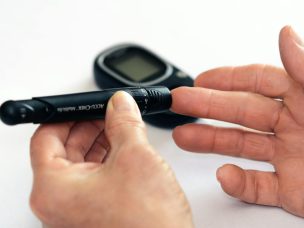WEDNESDAY, Feb. 3, 2021 (HealthDay News) — More advanced diabetic retinopathy (DR) at first diagnosis is a significant risk factor for developing sustained blindness over two years, according to a study published online Jan. 20 in Diabetes Care.
Charles C. Wykoff, M.D., Ph.D., from the Blanton Eye Institute in Houston, and colleagues evaluated the association between initial DR severity and risk for blindness in patients with newly diagnosed DR with good vision among 53,535 eyes identified in the American Academy of Ophthalmology Intelligent Research in Sight Registry.
The researchers found that during a mean follow-up of 662.5 days, 1.3 percent of eyes developed sustained blindness. Overall, 10.5 percent of eyes had proliferative DR but made up 26.5 percent (180 of 678) of eyes that developed sustained blindness. Compared with eyes with mild DR at baseline, eyes with moderate nonproliferative DR, severe nonproliferative DR, and proliferative DR at baseline were 2.6, 3.6, and 4.0 times more likely, respectively, to develop sustained blindness two years after DR diagnosis. When adjusting for index characteristics and development of ocular conditions during follow-up, eyes with proliferative DR had an increased risk for developing sustained blindness versus eyes with mild nonproliferative DR at baseline (hazard ratio, 2.26).
“Despite public health guidelines designed to increase eye screening in patients with diabetes, patients are still presenting with advanced DR,” the authors write. “The current results support the continued need for improved DR screening, patient education, and care coordination to reduce the burden of diabetes-associated blindness in the United States.”
Several authors disclosed financial ties to the pharmaceutical industry.
Abstract/Full Text (subscription or payment may be required)










